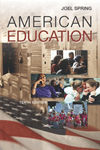 |
1 |  | 
Equality of opportunity means |
|  | A) | All members of the society are given equal chances to enter any occupation or social class. |
|  | B) | Everyone has an equal income and equal status in a society. |
|  | C) | Members of a social system occupy their positions because of merit, not because of family wealth, heredity, or special cultural advantages. |
|  | D) | All members of the society are given equal chances to enter any occupation or social class and they occupy their positions because of merit, not because of family wealth, heredity, or special cultural advantages. |
 |
 |
2 |  | 
Believing everyone has an equal opportunity to achieve wealth and power allows one to ignore blatant inequalities with the argument that they just didn't work hard enough. |
|  | A) | True |
|  | B) | False |
 |
 |
3 |  | 
Research has shown that |
|  | A) | The quality of one's education has no impact upon educational attainment. |
|  | B) | Low-quality education can hinder a person's ability to reach higher levels of attainment, and the opposite is true of a person receiving a high quality of education. |
|  | C) | Most individuals who receive a low-quality education are able to overcome this disadvantage if they work hard enough and reach higher levels of educational attainment. |
|  | D) | The quality of one's education can hinder one's ability to reach higher levels of educational attainment. |
 |
 |
4 |  | 
Resistance refers to the culture developed by urban schools in order to affirm the culture of students and to oppose the traditional goals of schools. |
|  | A) | True |
|  | B) | False |
 |
 |
5 |  | 
Which of the following is not one of the approaches American schools have used in an attempt to provide equality of opportunity. |
|  | A) | Allocating resources and materials according to the needs of the schools. |
|  | B) | Sorting machine model. |
|  | C) | Common schools. |
|  | D) | Intelligence-test movement. |
 |
 |
6 |  | 
Self-fulfilling prophecy refers to students living up to the expectations about them (i.e., if students are expected to do poorly, they do poorly; if expected to do well, they do well). |
|  | A) | True |
|  | B) | False |
 |
 |
7 |  | 
Which of the following is false? |
|  | A) | Unequal school expenditures are a major cause of the unequal distribution of educational opportunities between social classes and racial groups. |
|  | B) | The wealthiest school districts in terms of household income have 36 percent more revenue per student than the poorest districts. |
|  | C) | Since there is no correspondence between education and income, the quality of one's education does not impact one's earning capacity. |
|  | D) | During the 1990s, spending differences were reduced as a result of political pressure on state governments and court cases against state governments for violating the principle of equality before the law. |
 |
 |
8 |  | 
When income is used to evaluate economic worth, a female's educational achievements are worth: |
|  | A) | Three-fourths of a male's educational achievements. |
|  | B) | Ninety percent of a male's educational achievements. |
|  | C) | Almost half of a male's educational achievements. |
|  | D) | There is no difference; both genders earn equal pay for equal work. |
 |
 |
9 |  | 
Recently through compensatory education and Head Start programs, schools have attempted to end poverty and provide equality of opportunity by trying to compensate for unequal social conditions. |
|  | A) | True |
|  | B) | False |
 |
 |
10 |  | 
Income inequality is |
|  | A) | Decreasing with the upper-class share of total household income decreasing by 15% from 1980 to 1997. |
|  | B) | Increasing with the upper-class share of total household income increasing by 20% from 1980 to 1997. |
|  | C) | Decreasing with the upper-class share of total household income decreasing by 6% from 1980 to 1997. |
|  | D) | Increasing with the upper-class share of total household income increasing by 6% from 1980 to 1997. |
 |



 2002 McGraw-Hill Higher Education
2002 McGraw-Hill Higher Education